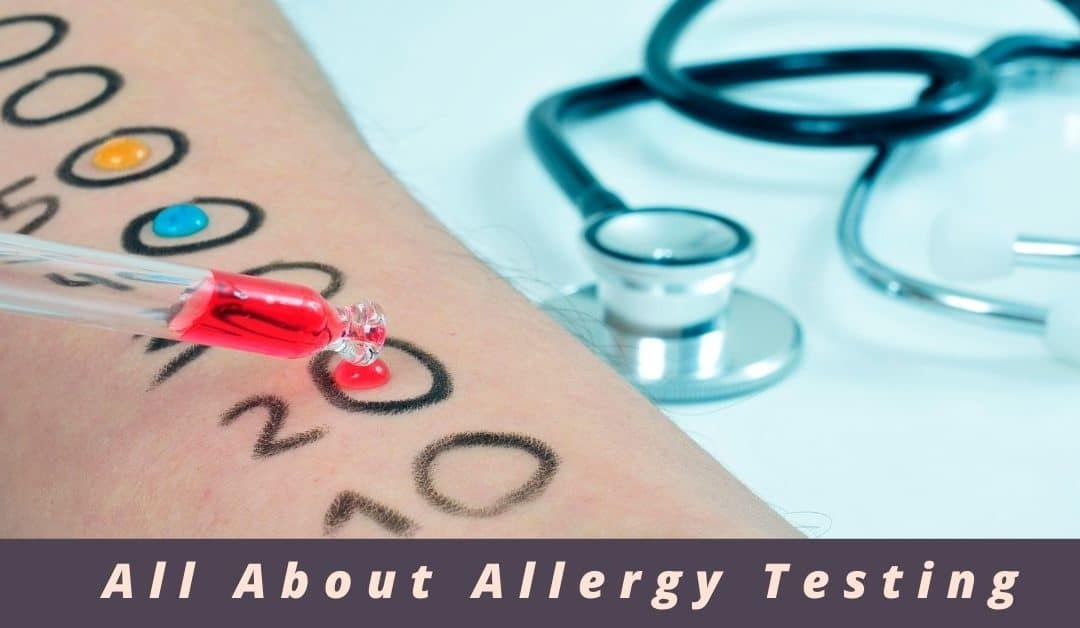It is common to have an allergy that you are actually not aware of so getting tested is a great way to identify any substances that are potentially harmful for your health.
Allergies occur when the body’s immune system overreacts to a substance that you have ingested, touched, or inhaled. The immune system mistakenly identifies the substance as a threat which activates its response system. This involves releasing antibodies to prevent the substance from negatively affecting your body.
These antibodies then detect the substance when you come into contact with it, activating the release of chemicals like histamine into your bloodstream which produce the symptoms associated with allergies.
Allergy Types & Symptoms
Allergens, the substance triggering the reaction, can be organized in three primary ways:
- Inhaled: are the most common type of allergy. These are allergens that are inhaled through the mouth and/or nose, first coming into contact with the lungs or membranes in the nasal passageways. Pollen is the most common inhaled allergen that people are allergic to. Other common inhaled allergens include pet dander, mold, and fungi.
- Ingested: refers to allergens that are specific ingredients in food. Though any food can cause an allergy, there are eight types of foods that account for 90% of all allergic reactions: eggs, milk, peanuts, tree nuts, wheat, soy, fish, and shellfish
- Contact: these are allergens that come into contact with your skin and produce a reaction. Common contact allergens include: soaps, detergents, and jewelry.
Allergens produce various symptoms that can range from mild to severe and include:
- Tingling and/or itchy mouth or throat
- Vomiting and/or stomach pain, diarrhea, nausea
- Hives, itchiness, eczema
- Wheezing, coughing, shortness of breath
- Tongue swelling making it difficult to breathe or talk
- Dizziness, fainting
The most severe symptom is anaphylaxis which is when swelling causes the airways to become narrower, restricting airflow. Anaphylaxis is life-threatening and has to be treated immediately.
Types of Allergy Tests
According to the Centers for Disease Control & Prevention (CDC), over 50 million people in the U.S. have allergies. It is also possible that millions more are navigating undiagnosed allergies. There are different ways allergens are identified, the main types of allergy tests are:
- Skin Test: there are a few types of skin tests which are used to identify various allergens that can be inhaled, ingested, and triggered through contact. One type of skin test involves inserting the potential allergen in the skin’s surface and observing if there is a reaction. Reactions typically occur relatively quickly and can look like If swelling, itchiness, and/or redness in the localized area. Another type of skin test is a patch-based test. This involves using adhesive patches that contain the potential allergens and sticking them on the skin. The patches remain on the skin and are observed for up to 4 days after placement.
- Blood Test: this option is straightforward and involves taking a blood sample and evaluating it for antibodies. Because the sample is taken to a lab for assessment, results can take longer to get back.
- Dietary Testing: typically, if results from skin and blood tests are inconclusive, the third option involves dietary modification. There are different ways this can be conducted:
- elimination diet: involves completely eliminating potential trigger foods from your diet. Then slowly introducing them back and observing any reactions.
- Rather than eliminating, your doctor could recommend ingesting small amounts of potential trigger foods under their supervision.
These methods identify specific allergens that are the source of adverse reactions. The next step is to manage your allergies on a daily basis.
Managing Allergies
Being proactive about your health can help you best manage your allergies. This is critical because there are no cures for allergies so it’s up to you to protect yourself! A few tips include:
- Always thoroughly read ingredient labels and look ingredients up if you need them!
- Be aware of the pollen count and avoid being outside when it is high
- Keep the air indoors clean by vacuuming often and using a dehumidifier
- Find the right combination of over the counter medications and/or natural remedies that works for you
- Avoid the spaces that trigger your allergies!
Have you had a challenging time with your allergies? We’re here to help! Contact us today to learn more about our allergy services.

